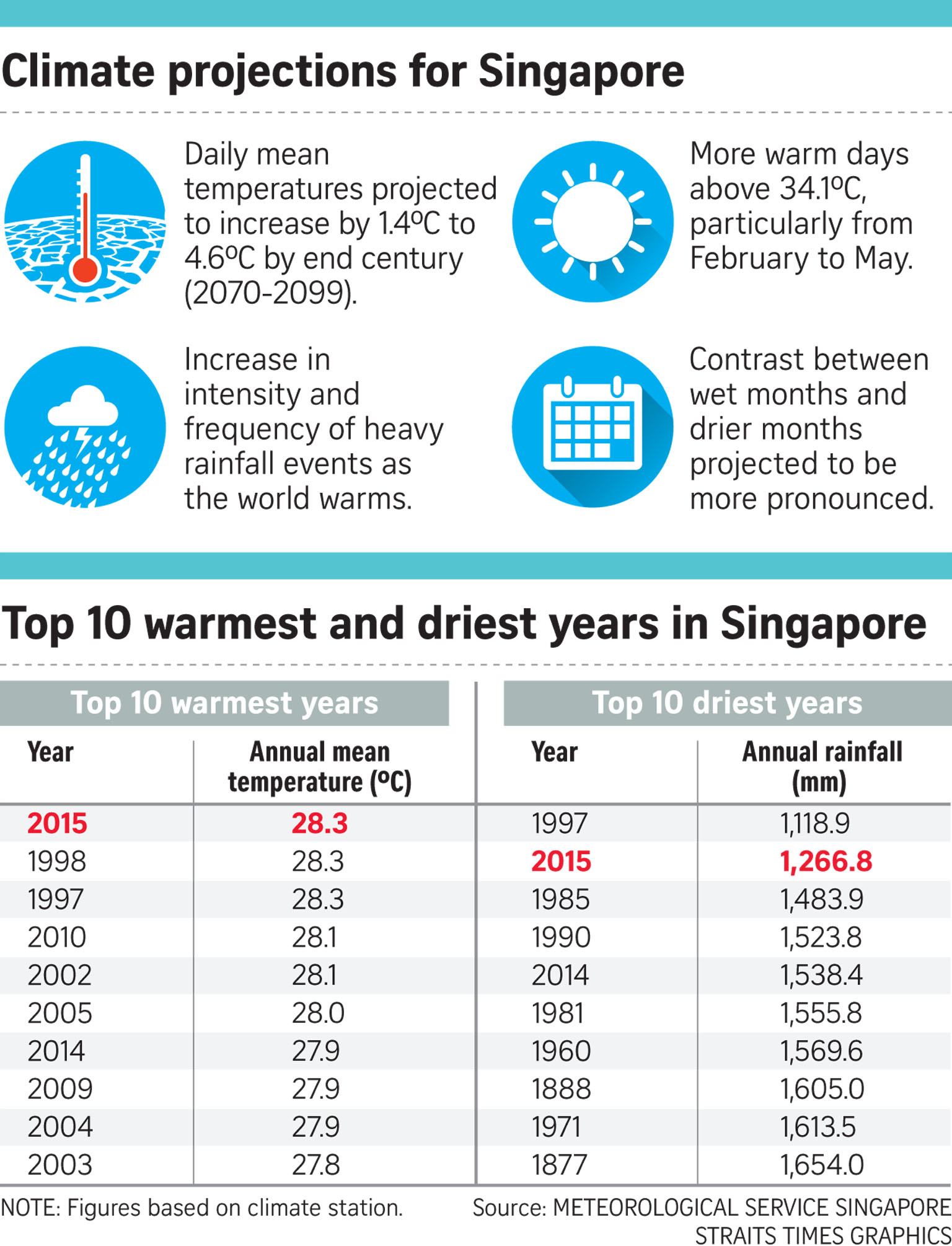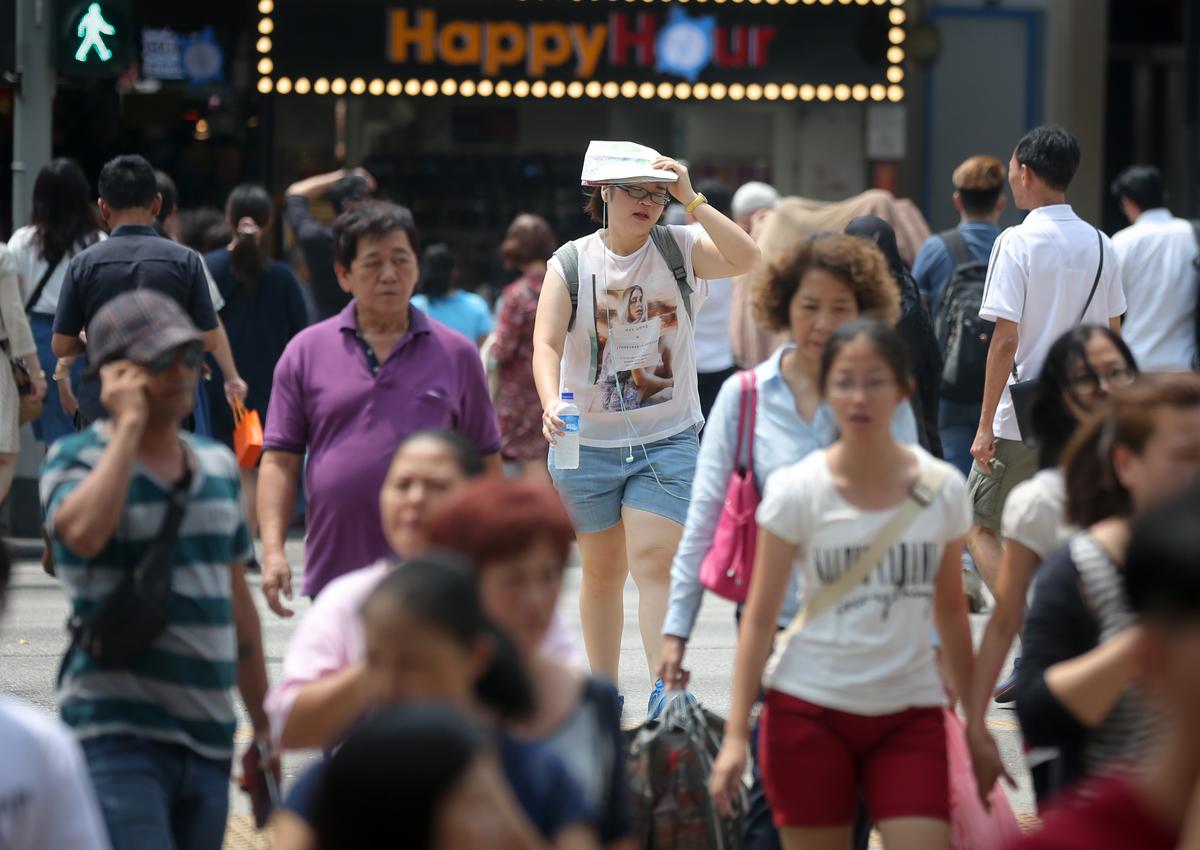Hotter weather could become more frequent in Singapore, along with more extreme weather fluctuations in the drier and wetter months.
In years to come, there are indications that the daily mean temperatures will rise further, according to an inaugural climate assessment report released by the Meteorological Service Singapore (MSS) yesterday.
The wet periods from November to January and dry months of February and from June to September are projected to get wetter and drier respectively.
Last year, Singapore recorded its joint warmest year, together with 1998 and 1997, with an annual mean temperature of 28.3 deg C. The other seven of the country’s 10 warmest years also occurred in the 21st century.
The higher annual mean temperature set last year was partly influenced by one of the strongest El Nino events on record, particularly in the latter half of 2015.
New monthly records were set for the warmest July and December, and records were equalled for October and November.
The warming trend here has been observed over several decades. The average rise of 0.25 deg C per decade from 1948 to 2015 is higher than the global warming rate of 0.12 deg C for a similar period from 1951 to 2012.
With only 1,266.8mm of rainfall recorded, 2015 was also Singapore’s second driest year after 1997.
The prevailing El Nino, which developed in the middle of last year and is gradually weakening, exacerbated the dry weather conditions in the region, leading to one of the most severe haze episodes here.

The annual report by the MSS, the national authority for weather and climate, provides updates on climate trends over Singapore, and highlights climatic features and weather occurrences that have affected the country during the year. It aims to provide a perspective of Singapore’s current climate situation with that of historical records.
The projections are not surprising, according to experts.
Associate Professor Koh Tieh Yong of SIM University and Assistant Professor Winston Chow of the National University of Singapore’s geography department agreed that these outcomes are likely to take place as long as greenhouse gas emissions continue worldwide from human activity.
Prof Koh said Singapore’s urban build-up does not help the situation, as “concrete city landscapes trap more heat than natural vegetation”. He added that with the dry spells that may occur more frequently by the end of the century, water resource management will be more important for Singapore.
With indications that hotter, drier and wetter conditions are expected, timely weather information will become more important.
In view of this, the MSS also launched a weather mobile application, Weather@SG, yesterday to provide users with access to current conditions at various locations, latest weather forecasts, and warnings of heavy rain and other hazards.
calyang@sph.com.sg

This article was first published on March 23, 2016.
Get a copy of The Straits Times or go to straitstimes.com for more stories.






